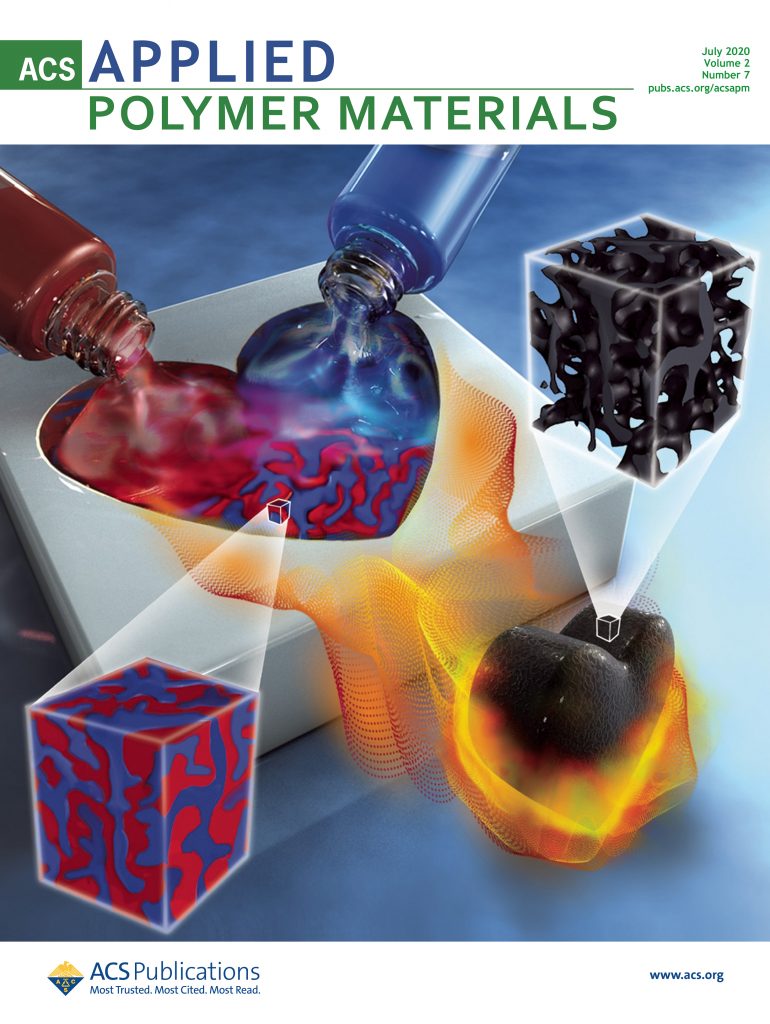Solid Knitting
IF 4.4
2区 化学
Q2 MATERIALS SCIENCE, MULTIDISCIPLINARY
引用次数: 0
Abstract
We introduce solid knitting, a new fabrication technique that combines the layer-by-layer volumetric approach of 3D printing with the topologically-entwined stitch structure of knitting to produce solid 3D objects. We define the basic building blocks of solid knitting and demonstrate a working prototype of a solid knitting machine controlled by a low-level instruction language, along with a volumetric design tool for creating machine-knittable patterns. Solid knitting uses a course-wale-layer structure, where every loop in a solid-knit object passes through both a loop from the previous layer and a loop from the previous course. Our machine uses two beds of latch needles to create stitches like a conventional V-bed knitting machine, but augments these needles with a pair of rotating hook arrays to provide storage locations for all of the loops in one layer of the object. It can autonomously produce solid-knit prisms of arbitrary length, although it requires manual intervention to cast on the first layer and bind off the final row. Our design tool allows users to create solid knitting patterns by connecting elementary stitches; objects designed in our interface can---after basic topological checks and constraint propagation---be exported as a sequence of instructions for fabrication on the solid knitting machine. We validate our solid knitting hardware and software on prism examples, detail the mechanical errors which we have encountered, and discuss potential extensions to the capability of our solid knitting machine.纯色针织
我们介绍了实心编织技术,这是一种新的制造技术,它将三维打印的逐层体积方法与编织的拓扑缠绕针迹结构相结合,从而制造出实心三维物体。我们定义了实体编织的基本构件,并展示了由低级指令语言控制的实体编织机工作原型,以及用于创建机器可编织图案的体积设计工具。实心编织采用 "层-层 "结构,实心编织物中的每个线圈都要穿过上一层的线圈和上一层的线圈。我们的机器与传统的 V 型针床针织机一样,使用两组舌针来编织针迹,但在这些舌针上增加了一对旋转钩阵列,以便为一层编织物中的所有线圈提供存储位置。它可以自主生产任意长度的实心编织棱柱,但需要人工干预第一层的投针和最后一行的装订。我们的设计工具允许用户通过连接基本针脚来创建实心编织图案;在我们的界面上设计的对象,经过基本的拓扑检查和约束传播后,可以导出为实心编织机上的编织指令序列。我们在棱镜实例上验证了我们的实心编织硬件和软件,详细介绍了我们遇到的机械错误,并讨论了实心编织机功能的潜在扩展。
本文章由计算机程序翻译,如有差异,请以英文原文为准。
求助全文
约1分钟内获得全文
求助全文
来源期刊

ACS Applied Polymer Materials
Multiple-
CiteScore
7.20
自引率
6.00%
发文量
810
期刊介绍:
ACS Applied Polymer Materials is an interdisciplinary journal publishing original research covering all aspects of engineering, chemistry, physics, and biology relevant to applications of polymers.
The journal is devoted to reports of new and original experimental and theoretical research of an applied nature that integrates fundamental knowledge in the areas of materials, engineering, physics, bioscience, polymer science and chemistry into important polymer applications. The journal is specifically interested in work that addresses relationships among structure, processing, morphology, chemistry, properties, and function as well as work that provide insights into mechanisms critical to the performance of the polymer for applications.
 求助内容:
求助内容: 应助结果提醒方式:
应助结果提醒方式:


